
The Great War and Academic Argument
World War I was cataclysmic not only in the death and destruction it wrought on the battlefield (with more than 10 million killed), but also in its shattering in the Western world (certainly in Europe) of certain kind of belief in the nobility of civilization and the inevitability of progress. “The war to end all wars,” in H.G. Wells’ immortal phrase, and the war that would “make the world safe for democracy,” according to President Woodrow Wilson — the idealism that inspired these phrases sounded bitterly ironic after the War, and by 1918 sardonic clouds had settled over the European psyche to stay.
This argument-based project teaches World War I through debates about the deepest causes of that conflict. It brings together primary and secondary textual and video sources to teach content through the framework of academic argument.
Debatable Issue
The debatable issue for the project asks students to look beyond and under the immediate trigger of World War I — the assassination of Franz Ferdinand of Austro-Hungary by Serbian nationalists — to the root, foundational, fundamental causes.
What was the most fundamental cause of World War I (1914 – 1918): nationalism, militarism, imperialism, or romanticism?
It is important to present definitions of these terms to the class. There are of course a wide variety of definitions for each term, and certainly many would fit this context. These are the definitions that we recommend you use.
Nationalism
Excessive love of one’s country or ethnicity, often coupled with looking down on or even hating other nations
Militarism
Obsessive focus on and investment in and building up of the military and armaments
Imperialism
The project of colonizing and exploiting less developed countries or territories around the world in the service of enriching one’s own country
Romanticism (related to warfare)
An unrealistic idealization of the world, and in particular in this context, a view that war is ennobling and even healthy as a place for men and nations to test and demonstrate their valor, strength, and character
These four forces and ways of understanding their world were all prevalent in Europe in the decades prior to World War I. This argument-based project has students think hard and critically about which of the four had more fundamental influence over the Europe’s descent into the cataclysm of the Great War than any other.
Method
We will lay out the way that this project should be implemented by reviewing, and attaching resources to, its implementation plan. The full project takes three weeks; it is possible, certainly, to shorten it by 5 – 10 days by removing certain instructional components.
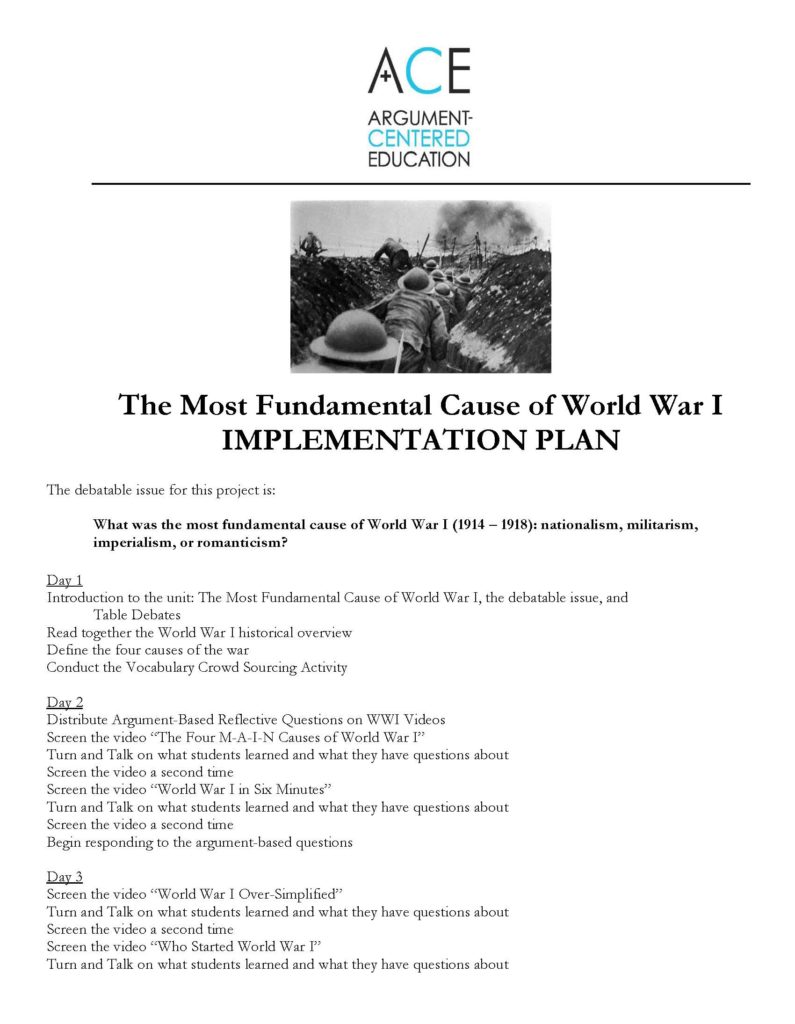
Day 1
Introduction to the unit: The Most Fundamental Cause of World War I, the debatable issue, and Table Debates
Read together the World War I historical overview
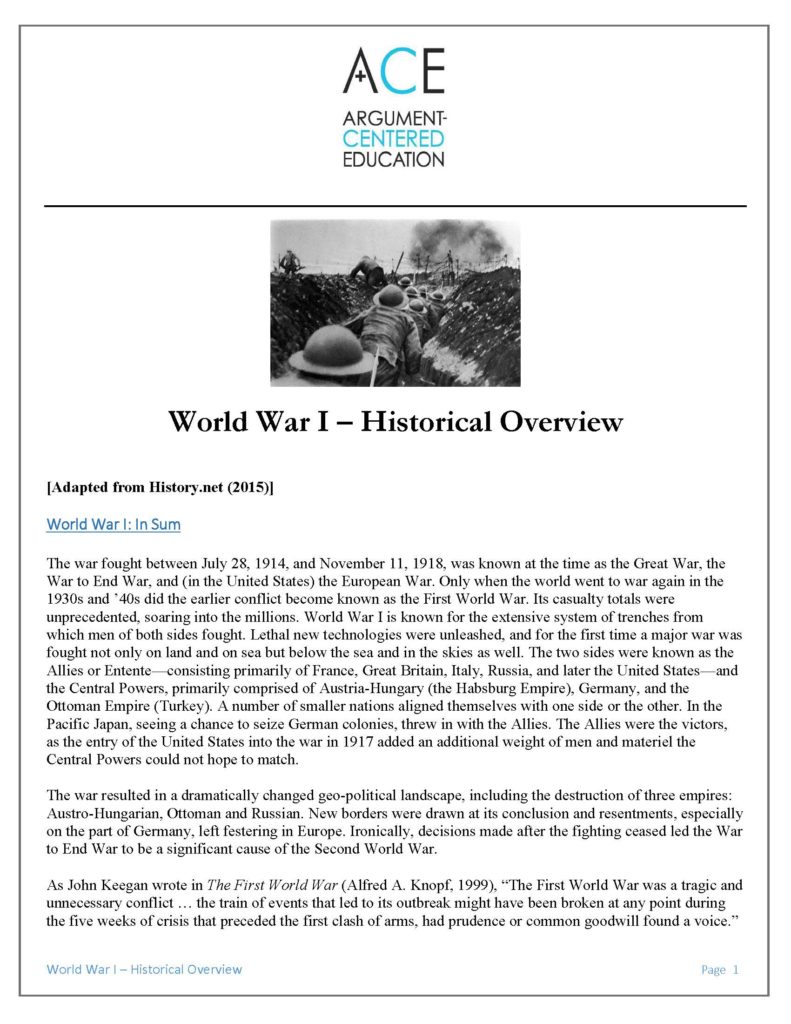
Define the four fundamental causes of the War that the project will be examining
Play “Rule, Britannia” to demonstrate all four causes


Conduct the Vocabulary Crowd Sourcing Activity
Day 2
Distribute Argument-Based Reflective Questions on WWI Videos
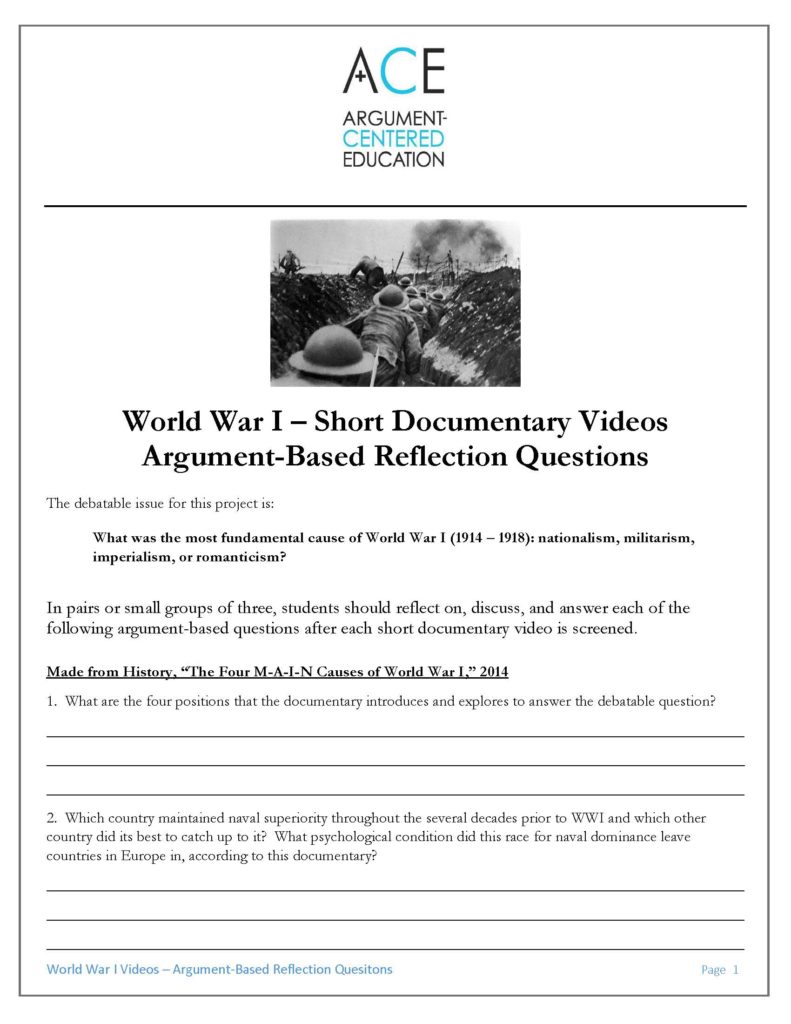
Screen the video “The Four M-A-I-N Causes of World War I”
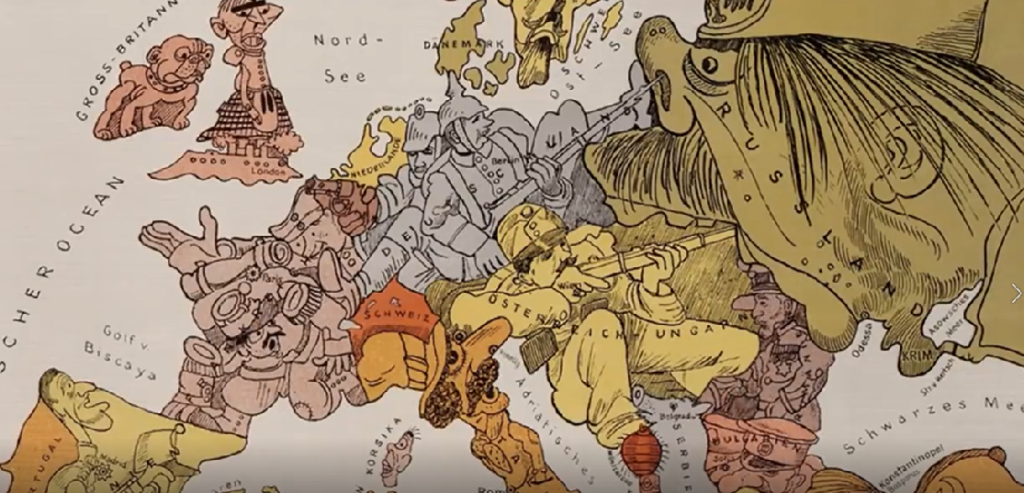
Turn and Talk on what students learned and what they have questions about
Screen the video a second time
Screen the video “World War I in Six Minutes”

Turn and Talk on what students learned and what they have questions about
Screen the video a second time
Begin responding to the argument-based questions
Day 3
Screen the video “World War I Over-Simplified”

Turn and Talk on what students learned and what they have questions about
Screen the video a second time
Screen the video “Who Started World War I”
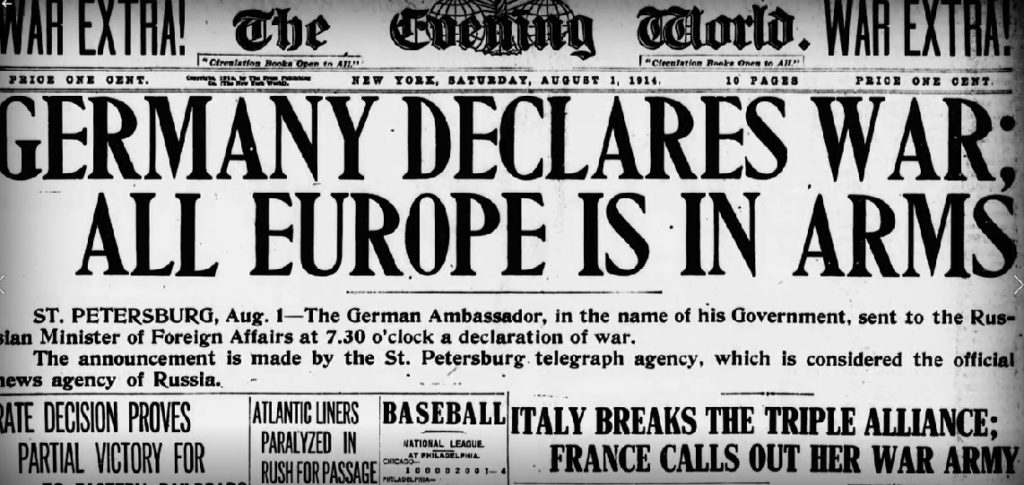
Turn and Talk on what students learned and what they have questions about
Screen the video a second time
Finish responding to the argument-based questions and submit them for formative assessment
Day 4
Return assessed argument-based reflection questions
Present short analytics on student work
Conduct teacher-led discussion of the questions and responses
Re-screen selective sections of the videos to deepen understanding
Begin to generate a claims list
Divide the vocabulary list in half and assign students one half to write full sentences demonstrating the meaning
Conduct a Think-Pair-Share on the vocab sentences
Day 5
Administer a vocabulary assessment, have students grade it and discuss challenging terms
Distribute Argument-Based Reflection Questions on Document Excerpts
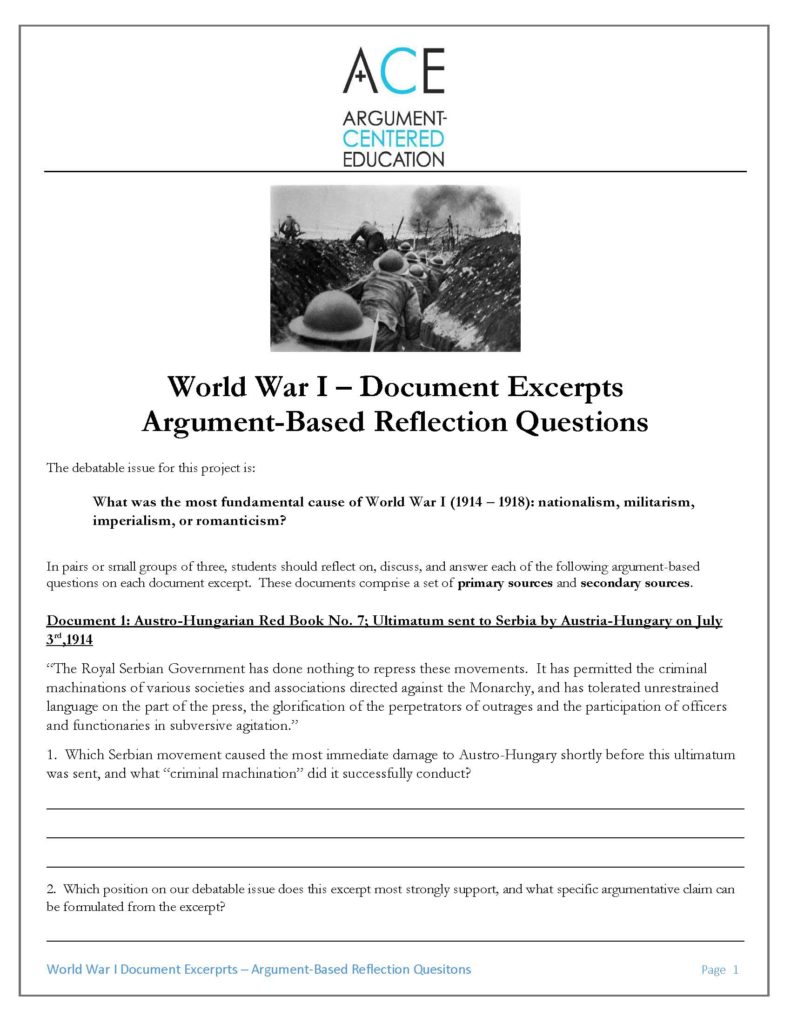
Have students work on responses independently
Share out and discuss a single document and students’ argument-based responses
Day 6
Continue working on and complete their responses to the reflection questions on document excerpts
Announce team partners for the Multi-Sided Debates
Have partners share and discuss responses to the reflection questions on document excerpts, revising as appropriate
Collect these responses and formatively assess
Day 7
Return responses to reflection questions on document excerpts
Present analytics on student work
Review and discuss the growing claims list
Distribute and review Multi-Sided Debates Format
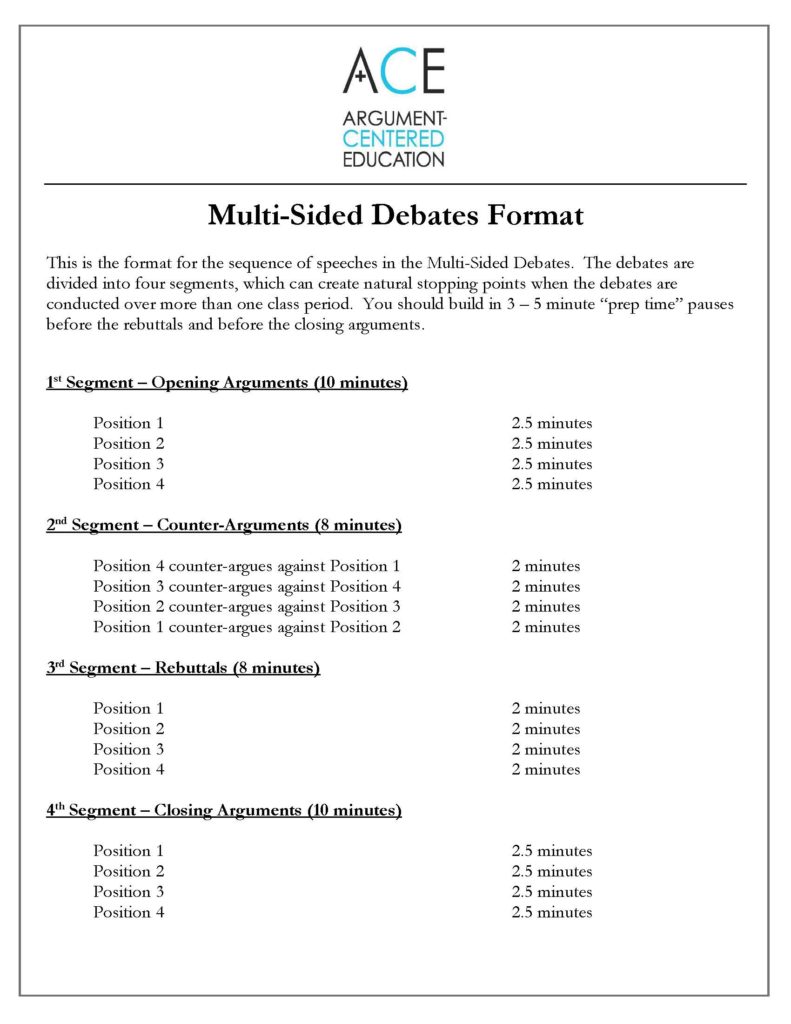
Distribute and review flow sheet model
Day 8
Assign a position to each partner-team
Post the two Multi-Sided Debate match-ups (meaning, which four partner-teams will be debating each other)
Distribute argument builders and an argument builder model
Review argument builder model
Begin argument building
Day 9
Continue argument building
Provide feedback to some partner-teams’ argument builders in class
Collect argument builders and formatively assess
Day 10
Turn back argument builders
Present analytics on student work, showcasing examples
Support students as they revise their argument builders
Have students take pictures of the two partner-teams’ argument builders that they will be counter-arguing against
Day 11
Distribute counter-argument builders and counter-argument builder model
Review counter-argument builder model
Support students in their counter-argument building
Day 12
Continue and complete counter-argument building
Provide feedback to some partner-teams’ counter-argument builders in class
Collect and formatively assess counter-argument builders
Day 13
Return counter-argument builders
Present short analytics on student work, showcasing examples
Review the Multi-Sided Debates format and flow sheet model and distribute flow sheets for the debates
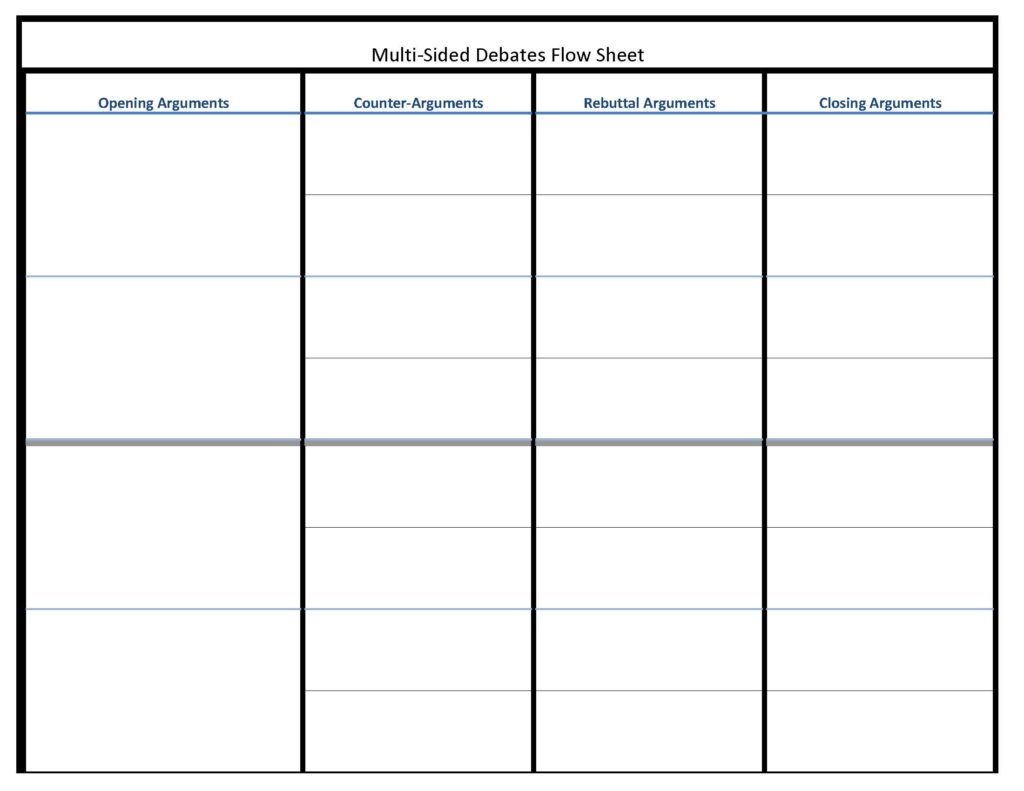
Day 14
Conduct the first round of Multi-Sided Debates
Day 15
Present feedback on the first round
Conduct the second and final round of Multi-Sided Debates
Summatively assess student performance in the debates
Collect and summatively assess argument writing on the builders
(Optional) Assign a summative argument essay

